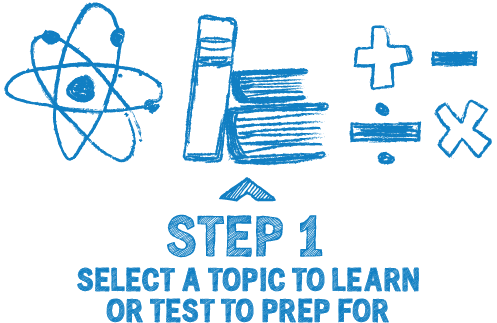Renewable and Non-Renewable Resources
Grade 7 Science Worksheets
Renewable resources are natural resources that can be replenished or restored within a relatively short period of time, either by natural processes or human intervention. Non-renewable resources, on the other hand, are natural resources that are finite and cannot be replenished once they are depleted.
Table of Contents:
- Renewable Resources
- Non-Renewable Resources
- Differences between Renewable & Non-Renewable Resource
- FAQs
Renewable and Non Renewable Resources - Grade 7 Science Worksheet PDF
This is a free printable / downloadable PDF worksheet with practice problems and answers. You can also work on it online.
|
Untimed | |
Sign up with your email ID to access this free worksheet.
"We really love eTutorWorld!"
"We really love etutorworld!. Anand S and Pooja are excellent math teachers and are quick to respond with requests to tutor on any math topic!" - Kieran Y (via TrustSpot.io)
"My daughter gets distracted easily"
"My daughter gets distracted very easily and Ms. Medini and other teachers were patient with her and redirected her back to the courses.
With the help of Etutorworld, my daughter has been now selected in the Gifted and Talented Program for the school district"
- Nivea Sharma (via TrustSpot.io)
Renewable Resources
Renewable resources are natural resources that can be replenished or restored within a relatively short period of time, either by natural processes or human intervention.
Examples of renewable resources include:
- Solar Energy
- Wind Energy
- Hydro Power
- Geothermal Energy
- Biomass

Renewable resources are becoming increasingly important as the world seeks to transition to more sustainable energy sources. They have numerous environmental and social benefits, including reducing greenhouse gas emissions, improving air and water quality, and creating jobs in the renewable energy sector.
Additionally, the cost of renewable energy has been declining rapidly, making it more competitive with non-renewable energy sources.
Non-Renewable Resources
Non-renewable resources, on the other hand, are natural resources that are finite and cannot be replenished once they are depleted. These resources were formed over millions of years and are being used up much faster than they can be replenished.
Examples of non-renewable resources include:
- Fossil fuels (coal, oil, natural gas)
- Minerals (gold, silver, copper, iron, etc.)
- Nuclear fuels (uranium, plutonium, etc.)

The use of non-renewable resources has significant environmental consequences, such as air pollution, water pollution, and climate change.
The depletion of these resources also poses a significant risk to future generations, as they will have limited access to these resources. The transition to renewable resources is essential for ensuring a sustainable future.
Fossil fuels are the most commonly used non-renewable energy sources. They are formed from the remains of plants and animals that died millions of years ago and were buried under layers of sediment. Over time, heat and pressure transformed the remains into coal, oil, and natural gas.
Nuclear fuels are extracted from the earth and used to generate electricity in nuclear power plants. They are mined from the earth’s crust and are not renewable, as their supply is finite.
Tar sands and oil shale are unconventional sources of oil that require extensive processing to extract. They are also non-renewable and have significant environmental impacts, including deforestation and water pollution.
The use of non-renewable energy sources has significant environmental consequences, including air pollution, water pollution, and climate change. Therefore, it is important to transition to renewable energy sources to ensure a sustainable future.
“There have been times when we booked them last minute, but the teachers have been extremely well-prepared and the help desk at etutorworld is very prompt.
Our kid is doing much better with a higher score.”
7th Grade Tutoring
eTutorWorld offers Personalized Online Tutoring for Math, Science, English, and Standardised Tests.
Our Tutoring Packs start at just under $21 per hour, and come with a moneyback guarantee.
Schedule a FREE Trial Session, and experience quality tutoring for yourself. (No credit card required.)
Differences Between Renewable & Non-Renewable Resources
Renewable and non-renewable resources differ in several ways, including:
1. Availability: Renewable resources can be replenished within a relatively short period of time, either by natural processes or human intervention, while non-renewable resources are finite and cannot be replenished once they are depleted.
2. Environmental Impact: The use of non-renewable resources has significant environmental consequences, such as air pollution, water pollution, and climate change, while renewable resources have fewer environmental impacts and are considered more sustainable.
3. Cost: The cost of renewable energy technologies, such as solar and wind power, has been declining rapidly, making them more competitive with non-renewable energy sources, such as coal and natural gas.
4. Energy Efficiency: Renewable resources are generally less efficient than non-renewable resources in terms of energy output per unit of input. For example, a solar panel may convert only a small percentage of the sun’s energy into electricity, while a coal-fired power plant can convert a much larger percentage of the energy in coal into electricity.
5. Dependence: Infrastructure for harvesting renewable energy is prohibitively expensive and not easily accessible in most countries. Non-renewable resources are often imported from other countries, which can create dependencies and geopolitical risks, while renewable resources can be produced domestically, reducing dependence on foreign sources of energy.
Overall, the transition to renewable resources is essential for ensuring a sustainable future, as non-renewable resources are finite and have significant environmental and social impacts.
Do You Stack Up Against the Best?
If you have 30 minutes, try our free diagnostics test and assess your skills.
FAQS
What are renewable resources?
Renewable resources are natural resources that can be replenished or regenerated over a relatively short period of time, either by natural processes or human intervention.
What are non-renewable resources?
Non-renewable resources are natural resources that are finite and cannot be replenished once they are depleted. These resources were formed over millions of years and are being used up much faster than they can be replenished.
What are some examples of renewable resources?
Examples of renewable resources include solar energy, wind energy, hydro power, geothermal energy, and biomass.
What are some examples of non-renewable resources?
Examples of non-renewable resources include fossil fuels (coal, oil, natural gas), minerals (gold, silver, copper, iron, etc.), and nuclear fuels (uranium, plutonium, etc.).
What is the environmental impact of non-renewable resources?
The use of non-renewable resources has significant environmental consequences, including air pollution, water pollution, and climate change.
Why is the transition to renewable resources important?
The transition to renewable resources is important for ensuring a sustainable future, as non-renewable resources are finite and have significant environmental and social impacts.
Are renewable resources cost-effective?
The cost of renewable energy technologies, such as solar and wind power, has been declining rapidly, making them more competitive with non-renewable energy sources, such as coal and natural gas.
How does the energy efficiency of renewable resources compare to non-renewable resources?
Renewable resources are generally less efficient than non-renewable resources in terms of energy output per unit of input.

Kathleen Currence is one of the founders of eTutorWorld. Previously a middle school principal in Kansas City School District, she has an MA in Education from the University of Dayton, Ohio. She is a prolific writer, and likes to explain Science topics in student-friendly language. LinkedIn Profile
Affordable Tutoring Now Starts at Just $22.49
eTutorWorld offers affordable one-on-one live tutoring over the web for Grades K-12. We are also a leading provider of Test Prep help for Standardized Tests (SCAT, CogAT, MAP, SSAT, SAT, ACT, ISEE, and AP).
What makes eTutorWorld stand apart are: flexibility in lesson scheduling, quality of hand-picked tutors, assignment of tutors based on academic counseling and diagnostic tests of each student, and our 100% money-back guarantee.
Whether you have never tried personalized online tutoring before or are looking for better tutors and flexibility at an affordable price point, schedule a FREE TRIAL Session with us today.
*There is no purchase obligation or credit card requirement
Grade 7 Science Worksheets
- Elements and Compounds
- Solar Energy
- Photosynthesis
- Electricity and Magnetism
- Law of conservation of energy
- Periodic table
- Properties of Matter
- Waves
- Energy Resources
- Weather and Climate
- Immune, Circulatory and Digestive Systems
- Organs in Multi-cellular Organism
- Sedimentary, Igneous, and Metamorphic Rocks
- Structure of the Earth
- Law of Conservation of Mass
- Physical and Chemical Changes
- Scientific Method
- Human Digestive System
- Environmental Science
- Renewable and Non-renewable energy Resources
- Characteristics of Living Organisms
- Life Science
- Earth and Space Science
- Solar Eclipse
- Heat Technology
- Newton’s Laws of Motions
- Physical Science
- Tools, Measurement and SI Units
- Earth Atmosphere
- Interactions of Living things
- The Earth Ecosystem
- Organelles in Plant and Animal cells
- Layers of the Earth
- Cycles in Nature
Grade 7 Math Worksheets
- Fractions
- Linear equations word problems
- Statistics
- Properties of Parallel Line
- Finding slope from an equation
- Identifying Quadrilaterals
- Percent Change
- Properties of addition and multiplication
- Pythagorean Theorem
- Solving two step inequalities
- Symmetry
- Fractions to Decimals (New)
- Whole Number Exponents with Integer Bases (New)
- Adding and Subtracting Fractions (New)
- Integer Addition and Subtraction (New)
- Dividing Mixed Numbers (New)
- Basics of Coordinate Geometry (New)
IN THE NEWS

Our mission is to provide high quality online tutoring services, using state of the art Internet technology, to school students worldwide.
Online test prep and practice
SCAT
SSAT
ISEE
PSAT
SAT
ACT
AP Exam
Science Tutoring
Physics Tutoring
Chemistry Tutoring
Biology Tutoring
Math Tutoring
Pre-Algebra Tutoring
Algebra Tutoring
Pre Calculus Tutoring
Calculus Tutoring
Geometry Tutoring
Trigonometry Tutoring
Statistics Tutoring
Quick links
Free Worksheets
Fact sheet
Sales Partner Opportunities
Parents
Passive Fundraising
Virtual Fundraising
Our Expert Tutors
Safe and Secure Tutoring
Interactive Online Tutoring
After School Tutoring
Elementary School Tutoring
Middle School Tutoring
High School Tutoring
Home Work Help
Math Tutors New York City
Press
©2022 eTutorWorld Terms of use Privacy Policy Site by Little Red Bird
©2022 eTutorWorld
Terms of use
Privacy Policy
Site by Little Red Bird










